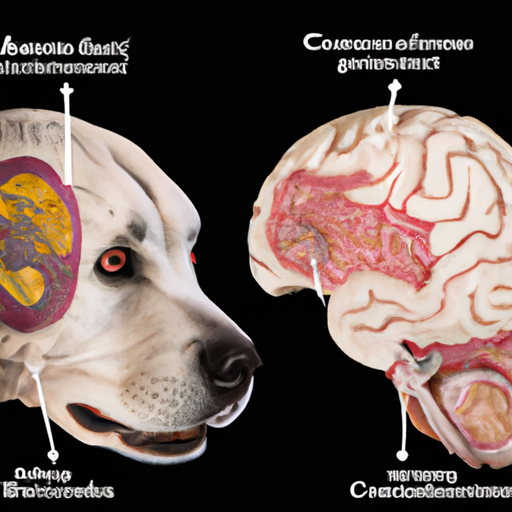A Glimpse Into The Canine Mind
Just like you, your furry friend has a complex, intricate organ nestled within their skull. This powerhouse of thoughts, feelings, and natural instincts, known as the brain, is not dissimilar to ours in many ways.
The brain of a dog is not just a smaller version of a human brain. While it might surprise you, the dog’s brain is only one-tenth the size of a human’s brain. But that doesn’t mean they’re any less intelligent or capable of complex thought.
The Anatomy of a Dog’s Brain
The dog brain is divided into three main regions:
- The forebrain (prosencephalon)
- The midbrain (mesencephalon)
- The hindbrain (rhombencephalon)
As a caregiver, understanding the functions of these different regions can help you better understand your dog’s behavior.
- The forebrain is responsible for sensory perception, learning, and memory.
- The midbrain controls many motor functions, allowing your dog to move and react to their environment.
- The hindbrain is in charge of balance, coordination, and vital autonomic functions like heart rate and breathing.
| Brain Region | Function |
|---|---|
| Forebrain | Sensory perception, learning, memory |
| Midbrain | Motor functions |
| Hindbrain | Balance, coordination, autonomic functions |
The Dog’s Sense of Smell and The Brain
The power of a dog’s nose is legendary. But did you know it’s their brain that truly deserves the credit? Dogs have a specialized area in their brain, six times larger than that in humans, dedicated solely to analyzing smells.
How Dogs Learn and Remember
Dogs, much like humans, learn by association and repetition. They have an impressive capacity to remember, especially when it comes to their owners and their routines. This ability is a product of the intricate neural connections within their brain.
The Emotional Life of Dogs
Dogs are extraordinarily emotional creatures. They experience a range of emotions, including joy, fear, anger, and even love. As a caregiver, it’s essential to recognize and respond to these emotions, as they are a fundamental part of your dog’s mental wellbeing.
FAQs
Q: How big is a dog’s brain?
A: On average, a dog’s brain is about the size of a lemon.
Q: Do dogs have a good memory?
A: Yes, dogs have an excellent memory, especially when it comes to their owners and routines.
Q: Can dogs feel emotions?
A: Absolutely. Dogs can experience a wide range of emotions, from joy and love to fear and anger.
Q: How does a dog’s sense of smell work?
A: Dogs have a specialized area in their brain dedicated to analyzing smells. This allows them to have a highly developed sense of smell.



